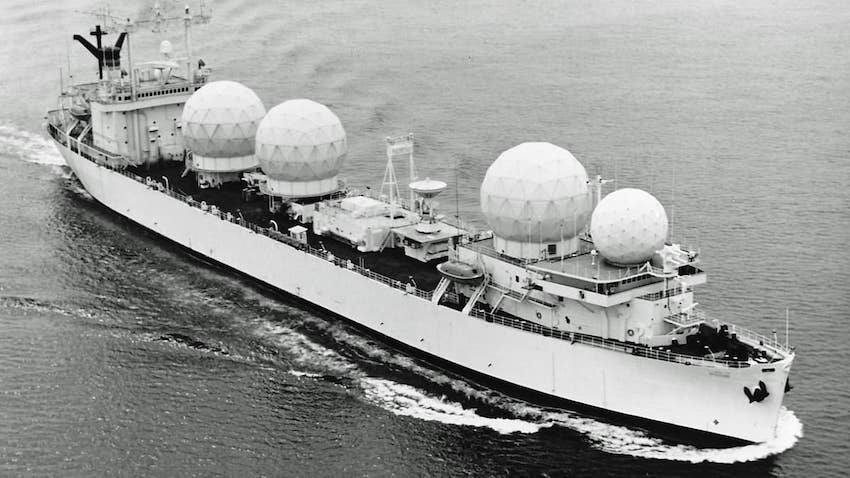
In May of 1961, President John F. Kennedy committed America to landing an astronaut on the moon by 1970. Preparations to accomplish this amazing feat began soon thereafter. In addition to the actual rocket and space capsule, worldwide communication monitoring and tracking of the space shot were of major concern. This is where three laid-up World War II T-2 tankers supplied the solution.

The three were chosen from a class known as Mission tankers of the T2-SE-A2 type. They were the Mission San Juan, Mission DePala and Mission San Fernando. They were completed in 1944 by the Sausalito, California-based Marinship Corp. at a cost of $2.95 million each and delivered to the U.S. Maritime Commission upon completion. The three were then manned by civilian mariners until 1947, when the Navy took the three and converted them to oilers. After their Naval service, they were placed in the reserve fleet in 1957.
In September 1964, the three vessels were reacquired by the Navy for conversion under the direction of the Instrumentation Ship’s Project Office for the use by the National Aeronautics and Space Administration (NASA) and the U.S. Department of Defense. They were renamed Flagstaff, Johnstown and Muscle Shoals, respectively.
The conversion contract was awarded to the General Dynamics Corp. of Quincy, Massachusetts. By June of 1966, the three were renamed Redstone, Vanguard and Mercury. The conversion of the ships costing some $90 million included the construction of a new midbody measuring 380 feet for each ship. Incorporated with these were the bow and stern sections from each of the original tankers. This gave the converted length of 595 feet for each ship.
The former midship’s bridge was removed from each vessel and a new enlarged structure was placed well forward. Also enlarged was the afterdeck house, which was heightened. The ships each had a crew of 90 officers and men and 120 technicians from the Air Force and NASA. The Vanguard was accepted for service in the Atlantic Ocean, the Redstone for the Indian Ocean and the Mercury for the Pacific Ocean. Further modifications were made to the communication and telemetry at Bethlehem Steel’s Hoboken Shipyard a year later.
Throughout the Apollo program, the three ships served well and by 1970 were returned to the Maritime Administration Reserve Fleet. The Vanguard and Redstone never sailed again, but in June 1970, Matson Navigation purchased the Mercury. It was towed to the Willamette Iron and Steel Shipyard in Portland, Oregon, and converted into a bulk carrier for $4 million.

The ship was renamed Kopaa (Hawaiian for sugar) and delivered to Matson in March 1971 for its sugar trade. The Kopaa completed 111 voyages to Hawaii at an average speed of 15.5 knots with a crew of 40 until being sold to the California and Hawaiian Sugar Co., a subsidiary of Pacific Gulf Marine in 1981. The ship was upgraded with its fireroom and galley being automated, thus reducing the manning from 40 to 28 crew. The ship sailed in the grain trades until being scrapped in Kaohsiung, Taiwan, in June 1984 at 40 years of age.
Source: Captain James McNamara/ Freightwaves

